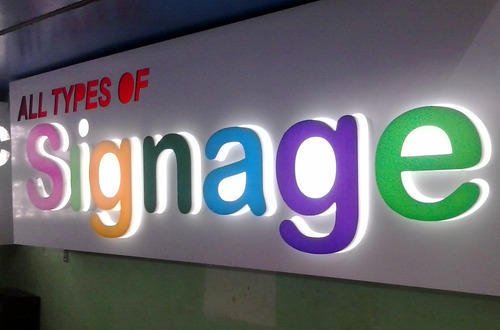

In today’s world, sustainability is not just a buzzword; it is a way of life. Businesses and consumers alike are increasingly focused on reducing their environmental impact, and signage is no exception. Eco-friendly signage is not only a responsible choice but also a savvy one, as it aligns with the values of an environmentally conscious customer base. In this blog post, we’ll explore the sustainable options available for your business and the benefits of eco-friendly signage.
Before delving into eco-friendly signage, it’s essential to understand the environmental impact of traditional signage. Conventional signage materials, such as PVC and other plastics, are derived from fossil fuels and often end up in landfills, which can take hundreds of years to decompose. Additionally, the production and disposal of traditional signage contribute to greenhouse gas emissions.
Eco-friendly signage is designed to minimize these negative environmental impacts while still effectively conveying your message. Let’s explore the benefits of making the switch to sustainable signage options:
1. Reduced Environmental Footprint
Eco-friendly signage materials are typically made from sustainable resources, recycled content, or are fully recyclable. This significantly reduces the environmental footprint of your signage, from production to disposal.
2. Healthier Indoor Air Quality
For businesses that use indoor signage, opting for eco-friendly materials can lead to improved indoor air quality. Traditional signage materials can emit volatile organic compounds (VOCs), which are harmful to human health. Eco-friendly alternatives are low- or VOC-free, ensuring a healthier environment for employees and customers.
3. Cost Savings
While the initial investment in eco-friendly signage materials may be slightly higher, the long-term cost savings can be substantial. Sustainable materials are often durable and require less maintenance, resulting in fewer replacements and reduced operational costs.
4. Positive Brand Image
Consumers increasingly support businesses that prioritize sustainability. By choosing eco-friendly signage, you demonstrate your commitment to environmental responsibility, which can boost your brand’s reputation and attract environmentally conscious customers.
5. Compliance with Regulations
In some regions, regulations and incentives are promoting the use of eco-friendly materials. By adopting sustainable signage, you can ensure compliance with these rules and potentially benefit from government incentives or rebates.
Now, let’s explore the eco-friendly signage options available for your business:
1. Recycled Materials
Many signage materials can be manufactured using recycled content. This includes options like recycled aluminum, plastic, and paper. Recycled materials often exhibit the same quality and durability as their non-recycled counterparts.
2. Bamboo
Bamboo is a fast-growing and renewable resource, making it an excellent choice for signage. It is solid, durable, and has a natural appeal. Bamboo signs are suitable for both indoor and outdoor use.
3. Cork
Cork is another sustainable material that can be used for a range of signage options. It’s lightweight, durable, and has natural thermal and acoustic insulation properties. Cork signs can be a unique and eco-friendly choice.
4. LED and Solar-Powered Signs
Opting for energy-efficient LED or solar-powered signage can significantly reduce your carbon footprint. LED signs consume less energy and last longer than traditional lighting, reducing maintenance needs.
5. Biodegradable Substrates
Some signage substrates are designed to be biodegradable, breaking down naturally without harming the environment. These materials are often used for temporary signage solutions.
6. VOC-Free Inks
The printing process is a crucial component of signage. Using VOC-free inks ensures that your signage is produced without harmful emissions, contributing to better indoor air quality.
7. Living Walls and Green Signage
For a truly eco-friendly and unique option, consider living walls or green signage. These solutions incorporate real plants, providing natural air purification and a visually striking presentation.
8. Paperless Digital Signage
Digital signage eliminates the need for printed materials. By going paperless, you reduce waste and have the flexibility to update your signage content easily.
Eco-friendly signage is more than a trend; it is a responsible choice for businesses that want to make a positive impact on the environment and appeal to environmentally conscious customers. By choosing sustainable materials, you can significantly reduce your environmental footprint, save on long-term costs, and enhance your brand’s image. From recycled materials to energy-efficient lighting, there are numerous eco-friendly signage options available to suit your unique needs. Making the switch to sustainable signage is a step toward a greener future for your business and the planet.

5 Powerful Ways Signage Empowers Self-Service Customers and Enhances Satisfaction

5 Surprising Ways Quality Signage Can Transform Your Business in

7 Emotional Triggers Your Signage Should Tap Into (If You

10 Crucial Things You Must Know About Signage Laws in
100% Original products that covered warranty by the vendor.
You have the right to return your orders within 30 days.
Your orders are shipped seamlessly between countries.
Your payments are secure with our private security network.